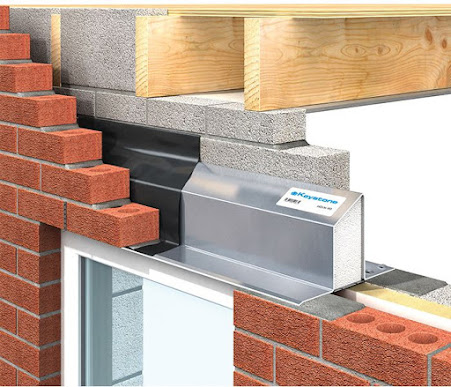
Different ways to choose the best lintels
Different ways to choose the best lintels
The lintel is a level flexural part which
ranges over the openings in the walls for entryways, windows, ventilators,
organizers, and so forth. The heap of stonework over the opening is moved to
the wall by the flexural activity of the lintel so edges of entryways, windows,
and so on are not unduly stacked. The end direction for the lintel ought to be
in any event 200 mm. The width of lintels is the same as that of the wall.
There are so many types of lintels that are
used in construction such as wood lintels, brick lintels, steel lintels, and so on.
Wood
Wood lintels have been utilized for a very
long break of some other material, however, they have been supplanted by more
present day materials since they are more helpless against the components and
need normal fixes. Lumber lintels are not flame resistant and are inclined to
rot after some time. Their helpless sturdiness and high establishment cost make
them a disagreeable material, yet they are as yet utilized in sloping districts
where lumber is all the more generally accessible.
Block
Block lintels are regularly utilized when
the launch of the entryway or window is not exactly a meter long and the heap
above it is lighter in weight. Block lintels are not strong enough to be
utilized alone, so they are regularly upheld by other lintel materials, for
example, metal or stone. Block lintels are by and large introduced for stylish
reasons, as they will in general supplement most home outsides.
Stone
Stone is one of the most well-known
materials utilized for lintels, however, it is generally utilized in zones
where the stone is broadly accessible. Stone lintels are regularly utilized in
more established structures however it is a significant weak material due to
its powerlessness to withstand substantial burdens. Stone lintels will in
general be more costly, and if the heap is inclined to construction, at that
point breaks are probably going to frame. The thickness of a stone lintel
shifts relying upon the width of the opening, to guarantee that it can
withstand the weight.
Steel
Steel lintels are the most grounded
material utilized for lintels, thus it is frequently utilized with amazingly
hefty burdens and more extensive openings. Steel lintels are commonly less
helpless against the components, remembering dampness and changes for the
atmosphere, so they are a famous choice for current homes. Another advantage of
steel lintels is that they can be punctured before establishment, so they can
be quickly applied with mortar.
Wall construction will affect the size and
state of the lintel required. Open-back and open-back-returned lintels are
generally regular for cavity walls and appropriate for standard obligation
through to additional substantial stacking conditions, including direct rooftop
and storage room bracket stacking.
Lintels for outer strong walls are
accessible in three unmistakable sorts: a solitary component lintel that is
intended to help a solitary leaf of brickwork; a two-section lintel formed to
convey two separate leaves of 215mm absolute thickness reasonable face block
wall; and a case profile lintel with a toe, for use in strong block or square
walls of 200-215mm thickness.
There are likewise three sorts for interior
wall lintels: creased lintels that offer a savvy answer for light loads;
channel lintels for standard obligation applications; box lintels to manage
heavier burdens and more extensive openings.
Whenever you have picked the wall
construction and thicknesses of workmanship, you should work out the necessary
length of the lintel. This is basically done by adding 300mm to the width of
the auxiliary opening. That additional length gives 150mm course at each finish
of the lintel, which is fundamental for accomplishing the lintel's full
exhibition.
Focal
points of the lintel
·
Lintels have the accompanying
focal points:
·
They have a spotless,
straightforward look.
·
They are anything but difficult
to assemble and introduce.
·
They are anything but difficult
to focus on.
·
They can tolerate a substantial
burden.
Fitting
another lintel
·
When fitting another lintel,
remember the accompanying:
·
The orientation of the lintel
is the length of each finish of the bar that lays on the current brickwork.
Significantly, there is adequate bearing on each side to guarantee the lintel
doesn't avoid under the heap it's supporting.
·
It is likewise crucial to
guarantee the lintel is of adequate stature to oblige the hearth thickness in
addition to the tallness of the oven.
·
On the off chance that the
current lintel is excessively high, another lintel can be fitted underneath the
current one.









